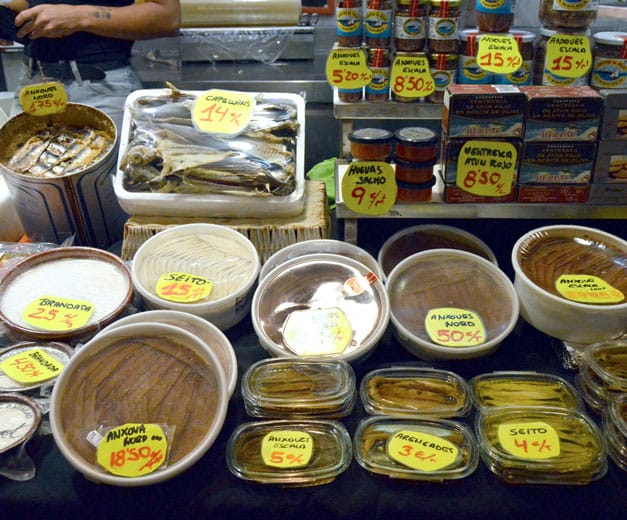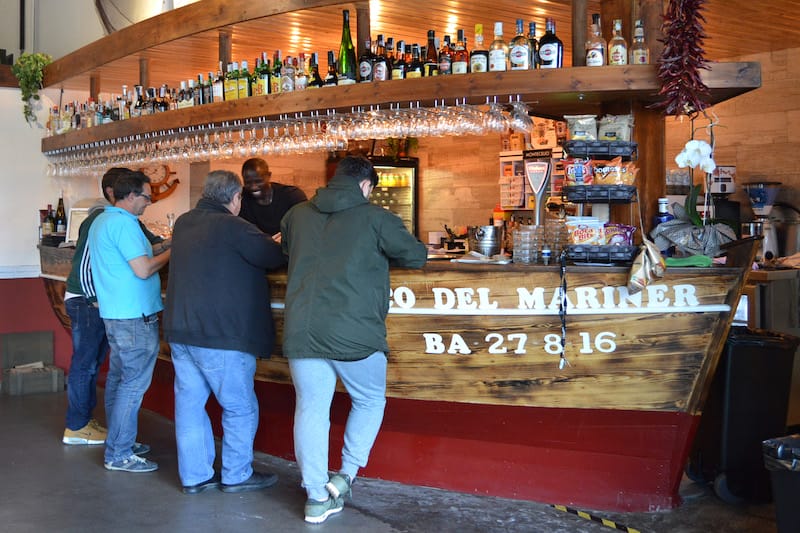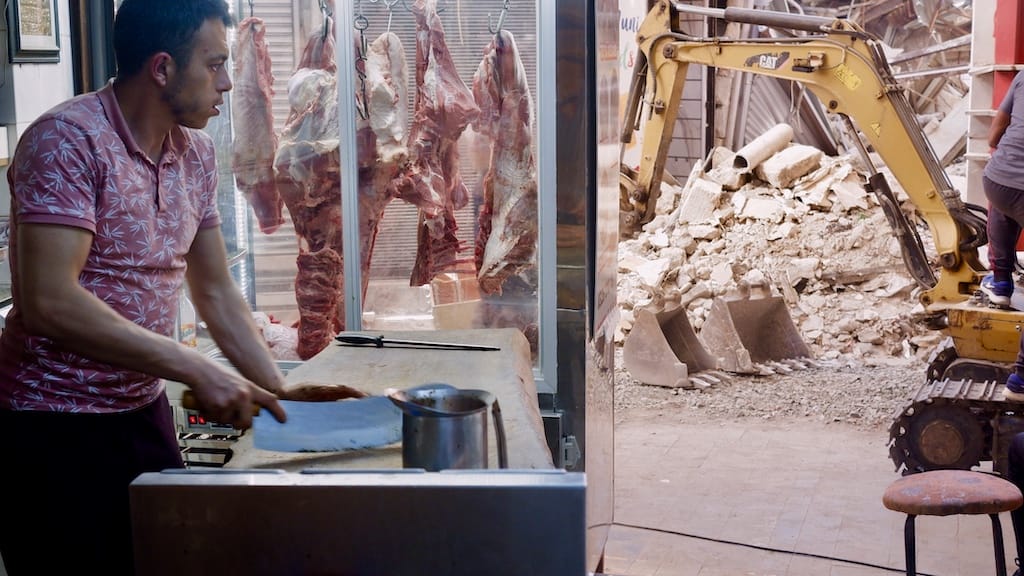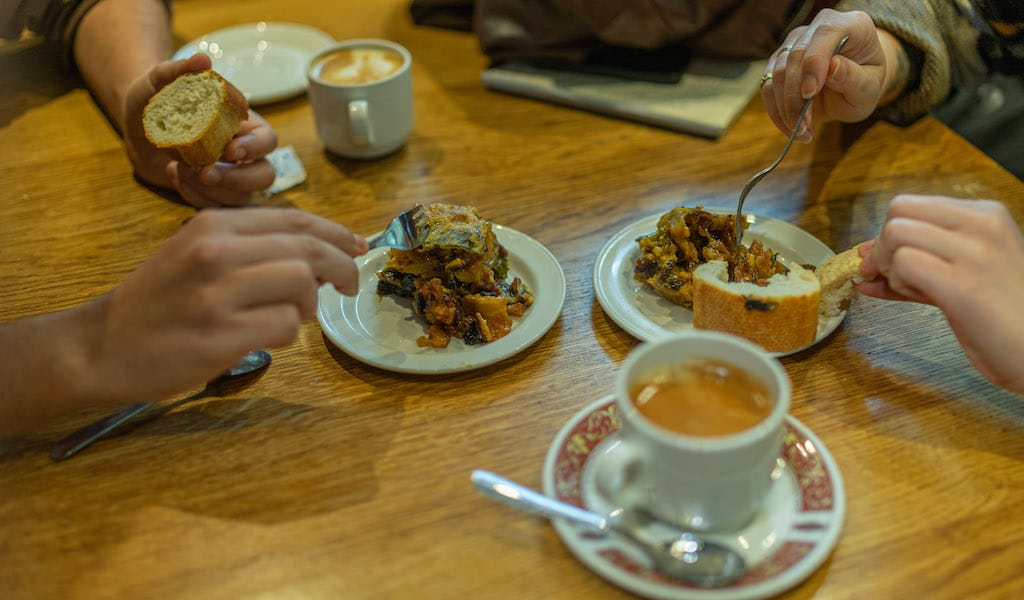Editor’s note: To inaugurate our new series, Building Blocks, which explores the fundamental ingredients of the cuisines we cover, we turn to Spain, where anchovies play a large role in the cooking of many regions there.
Anchoa, boquerón and bocarte: These names – in Spanish, Basque and Catalan, respectively – all describe the same little fish, the anchovy, and to make matters more confusing, the names also indicate how the fish is prepared, depending on what region you’re in.
For a Basque native, “anchoa” refers to the fresh fish and the brown cured fillets; a “boquerón” can only mean an anchovy fillet marinated in vinegar. For other northerners, like Cantabrians and Galicians, the fresh fish is usually “bocarte,” while white, marinated anchovies are “boquerones,” and “anchoas” are only the expensive salt-cured brown delicacy preserved in olive oil. Along the Mediterranean coast, however, locals use “anchoa” for the browns and “boquerón” for all the re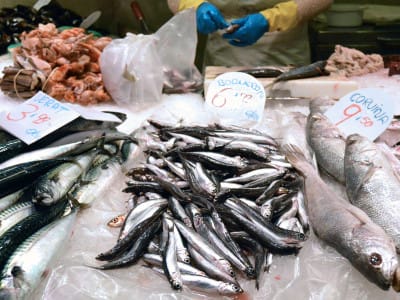 st, whether fresh, fried or white cured in vinegar. Usage is also linked to regional preparations, so if we’re in Barcelona and find “tapa de bocartes” on a menu, we would understand immediately that it’s a Cantabrian dish. Furthermore, the Atlantic anchovy tends to be a bit bigger than its Mediterranean brethren, so fresh bocartes are going to be a bit bigger than fresh boquerones. In Catalan, the names are anxova for the brown preserved in olive oil and seitón (also aladrocs in southern Catalonia and northern Valencia) for the white marinated fresh as well as fried fish.
st, whether fresh, fried or white cured in vinegar. Usage is also linked to regional preparations, so if we’re in Barcelona and find “tapa de bocartes” on a menu, we would understand immediately that it’s a Cantabrian dish. Furthermore, the Atlantic anchovy tends to be a bit bigger than its Mediterranean brethren, so fresh bocartes are going to be a bit bigger than fresh boquerones. In Catalan, the names are anxova for the brown preserved in olive oil and seitón (also aladrocs in southern Catalonia and northern Valencia) for the white marinated fresh as well as fried fish.
So generally speaking, “boquerón” (and “bocarte” in the north) is the designation for fresh, cooked and vinegar-macerated anchovies, while “anchoa” refers to the salt-cured brown kind.
In Spain, anchovies (Engraulis encrasicolus, from the expansive Engraulidae family) have been, as in other Mediterranean cultures, a fundamental part of the diet here for a long, long time. Small and delicate, they have traditionally been caught along the Spanish Mediterranean and Atlantic coasts and, like cod, have been cured for preservation and transport for centuries.
 While here in Spain we prepare fresh anchovies in numerous ways, there are just three that are the most traditional and popular: cured in salt and preserved in olive oil; fresh and macerated in vinegar; and coated in batter and fried. The last are especially classic in Andalusia (the locals from Málaga are called “boquerones”) and in other regions such as Catalonia where there is an Andalusian influence. In Barcelona you can easily find this specialty in many bars and restaurants close to the sea, such as at La Plata; in the neighborhood of La Barceloneta (Bodegueta, L’Electricitat, La Playa, Casa Ricardo…); and also in Peixet als Encants, the city’s most famous flea market.
While here in Spain we prepare fresh anchovies in numerous ways, there are just three that are the most traditional and popular: cured in salt and preserved in olive oil; fresh and macerated in vinegar; and coated in batter and fried. The last are especially classic in Andalusia (the locals from Málaga are called “boquerones”) and in other regions such as Catalonia where there is an Andalusian influence. In Barcelona you can easily find this specialty in many bars and restaurants close to the sea, such as at La Plata; in the neighborhood of La Barceloneta (Bodegueta, L’Electricitat, La Playa, Casa Ricardo…); and also in Peixet als Encants, the city’s most famous flea market.
The cured and vinegar-macerated preparations are traditional accompaniments for aperitifs and vermuts, especially whites. White anchovies are called “boquerones” and are usually served as a tapa with vermut or beer. In Barcelona, boquerones en vinagre are typically served with a sauce of paprika and olive oil created by the local brand L’Espinaler. At places like Morro Fi or traditional bodegas like Quimet i Quimet, you’ll also find a traditional tapa called matrimonio (“marriage”) that brings white (boquerón) and brown (anchoa) anchovies together.
Salt-curing in Europe has Phoenician origins and was further developed by the Romans and other Mediterranean cultures over the centuries. There is evidence that, in Catalonia, the Ampurias port (in Girona province) was a site of salt preservation at the time of its founding by the Greeks in 500 BCE. By the 19th and 20th centuries, the salt-curing industry had become concentrated in the village of L’Escala, and today, this is where the best Catalan (Mediterranean) anchovies continue to be cured.
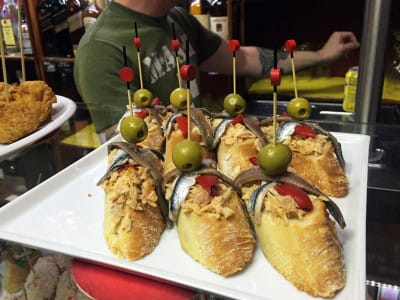 In the north of Spain, canning as a preservation method became widespread in the late 19th century. This was thanks to a number of Italian producers who came to the region in search of better anchovy catches. In the region of Cantabria, on the Bay of Biscay, these Italians found great anchovy fisheries in villages like Santoña, and many of them ultimately stayed in the area, married locals and started new companies there. But it was one Giovanni Vella Scatagliota who changed everything. He began selling the most exquisite canned salt-cured anchovies, a delicate bite carefully cleaned by hand to eliminate skin and bones to make a shiny, clean fillet and then preserved in olive oil so that it was ready to eat. He ennobled a fish that, until then, was used in Cantabria mainly as bait.
In the north of Spain, canning as a preservation method became widespread in the late 19th century. This was thanks to a number of Italian producers who came to the region in search of better anchovy catches. In the region of Cantabria, on the Bay of Biscay, these Italians found great anchovy fisheries in villages like Santoña, and many of them ultimately stayed in the area, married locals and started new companies there. But it was one Giovanni Vella Scatagliota who changed everything. He began selling the most exquisite canned salt-cured anchovies, a delicate bite carefully cleaned by hand to eliminate skin and bones to make a shiny, clean fillet and then preserved in olive oil so that it was ready to eat. He ennobled a fish that, until then, was used in Cantabria mainly as bait.
Nowadays, those wonderful Cantabrian anchovies might be sold in restaurants for €2 a fillet for the highest-grade fish. Chefs in Barcelona also use them in interesting dishes, such as the “Soldadito” at Norte and the surprising “Anchoa con dulce de leche,” with its amazing contrast of flavors, at La Pepita.
Published on October 07, 2015
Related stories
December 19, 2017
BarcelonaUpdate: Sergi de Meia is sadly no longer open. This was an intense year for Barcelona, with a complex political situation stemming from Catalonia’s bid for independence from Spain. It was a storm that the culinary scene could not help but get caught up in. Bars and restaurants have always been a temple of leisure…
April 28, 2023
IstanbulIn the main hall of Antakya’s bus station terminal, there are deep cracks in the walls, rubble litters the floor and dozens of ceiling panels seem to hang on by a thread, the entire thing threatening to collapse at any moment. Bus companies have set up mobile desks outside of the station, and it is…
March 7, 2024
San Sebastián | By Culinary Backstreets
San SebastiánAs we excitedly introduce San Sebastian, our newest Culinary Backstreets city, we sat down to chat with one of our local experts, Sasha Correa. There’s a lot to say about food in this small city on the Bay of Biscay, a place where Basque traditions run deep but that has also made a name for…







































